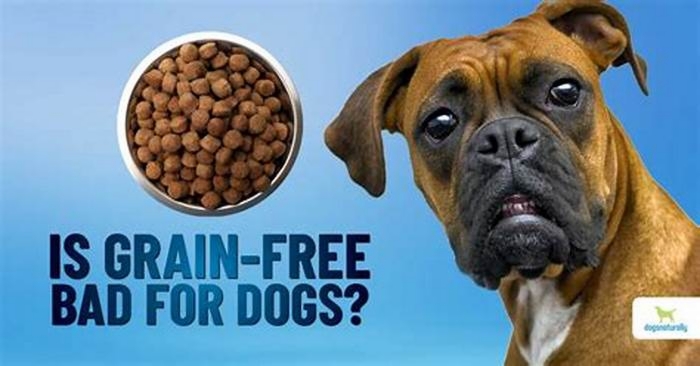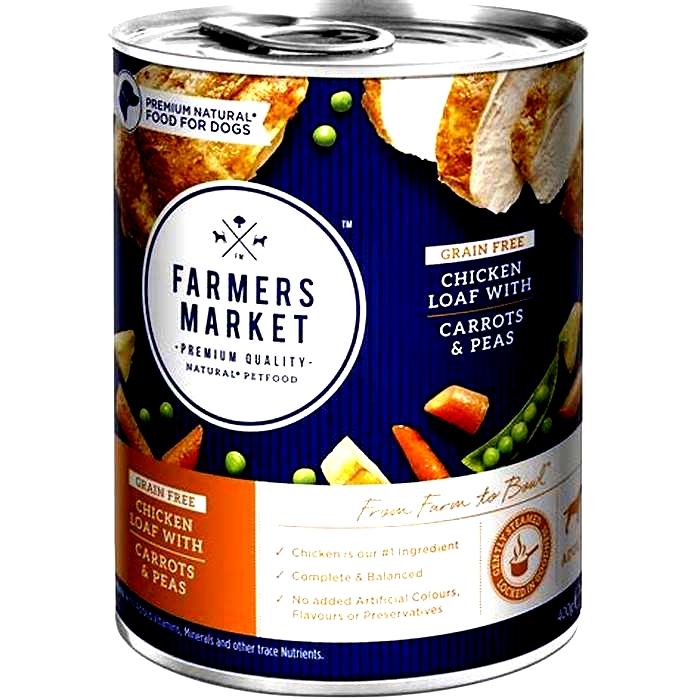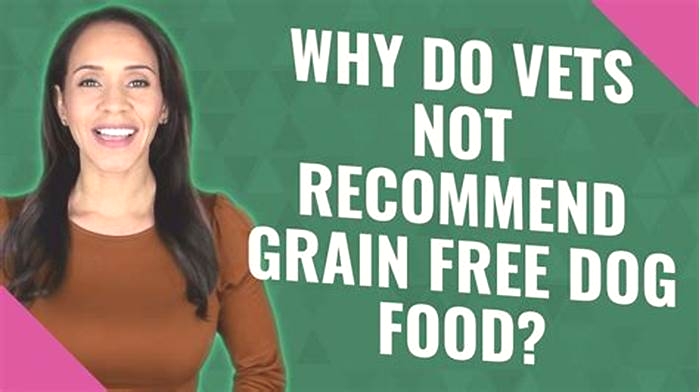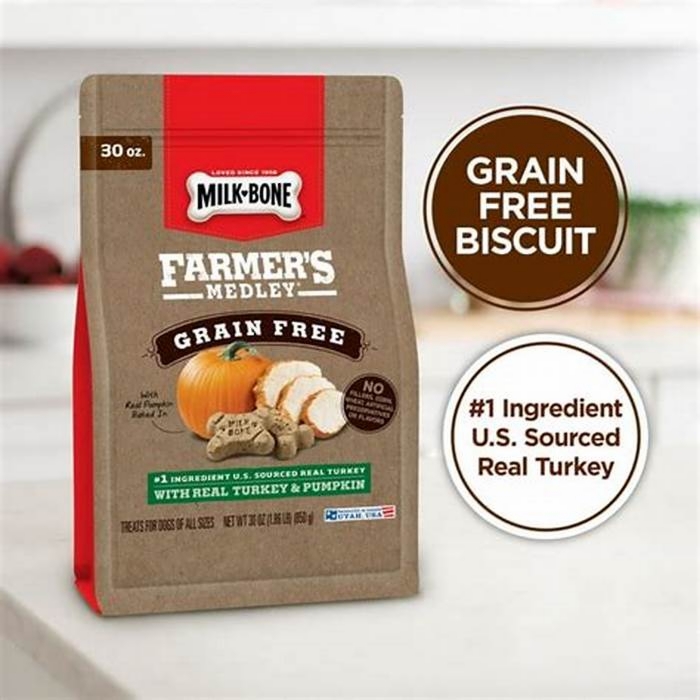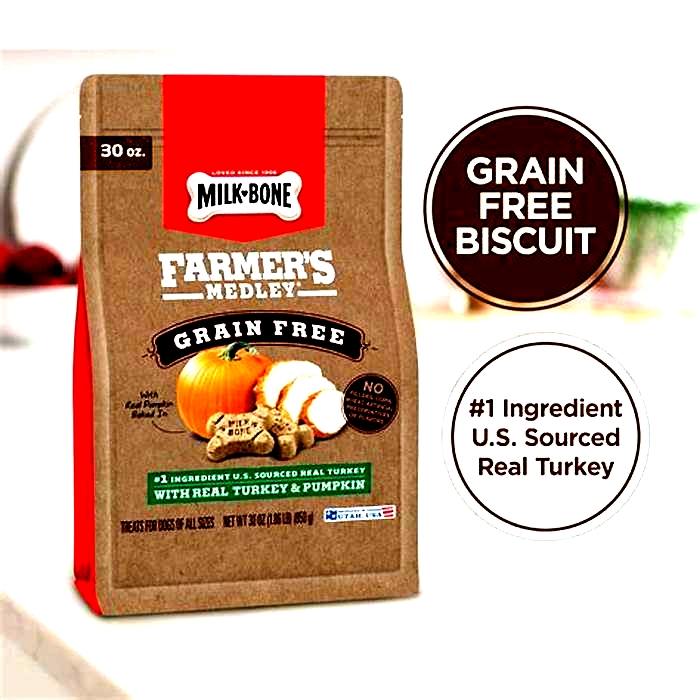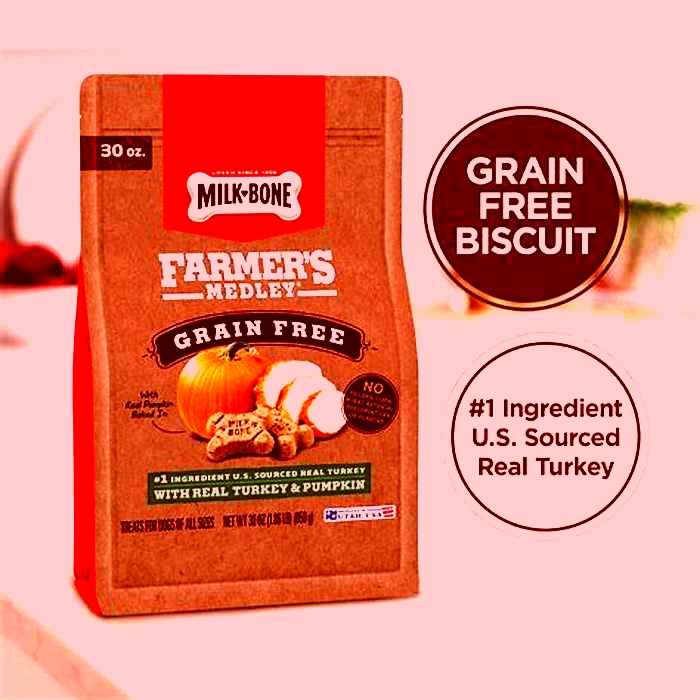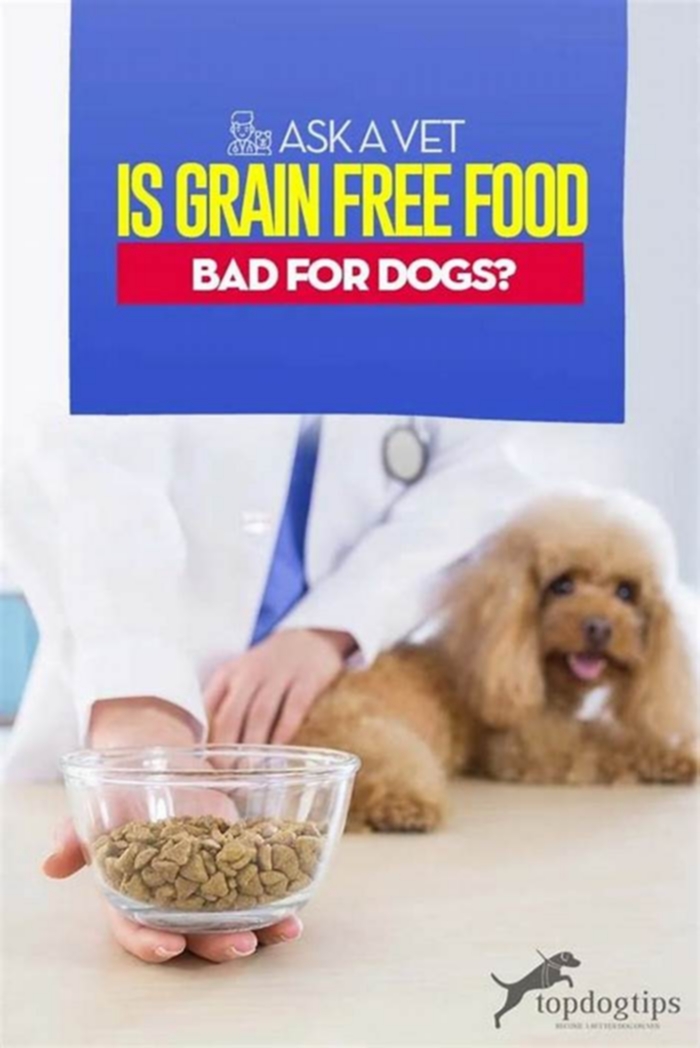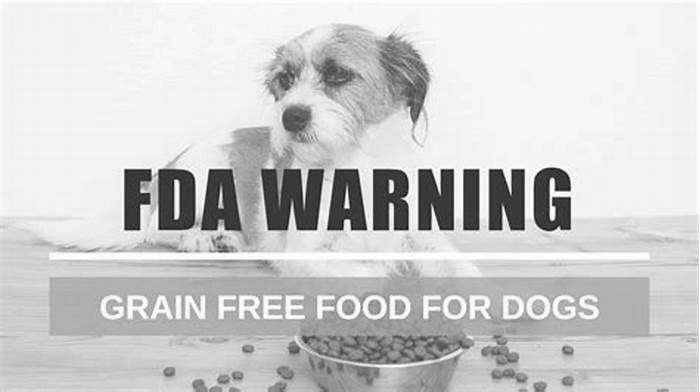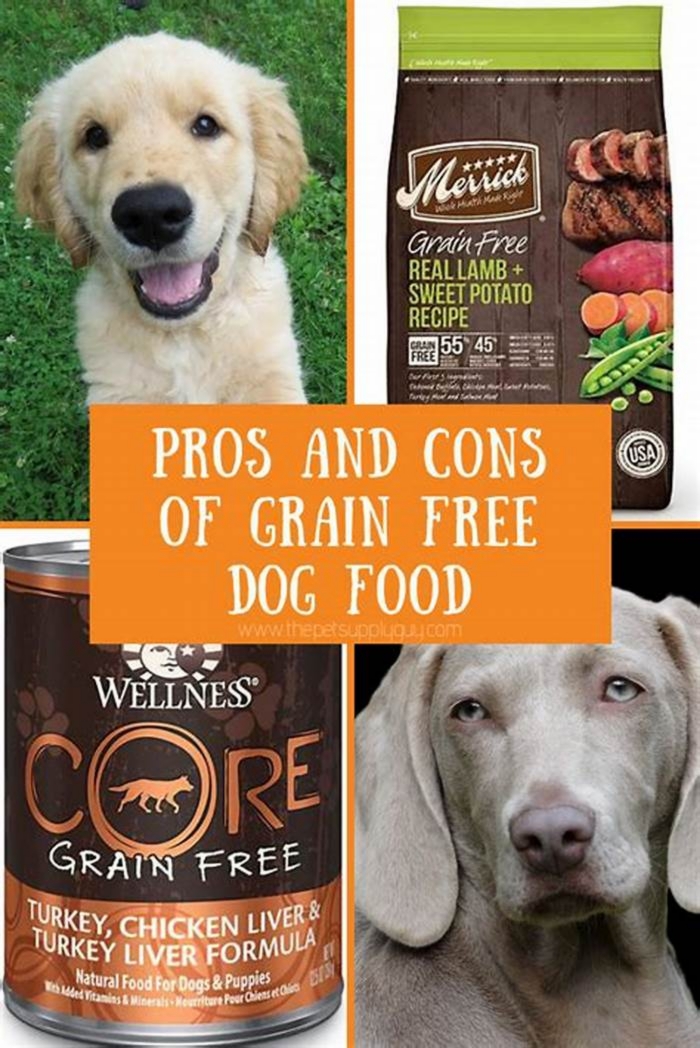Which is better for dogs grain or grain free

Grain-Free vs Grain Dog Food: 2024 Comparison, Pros & Cons
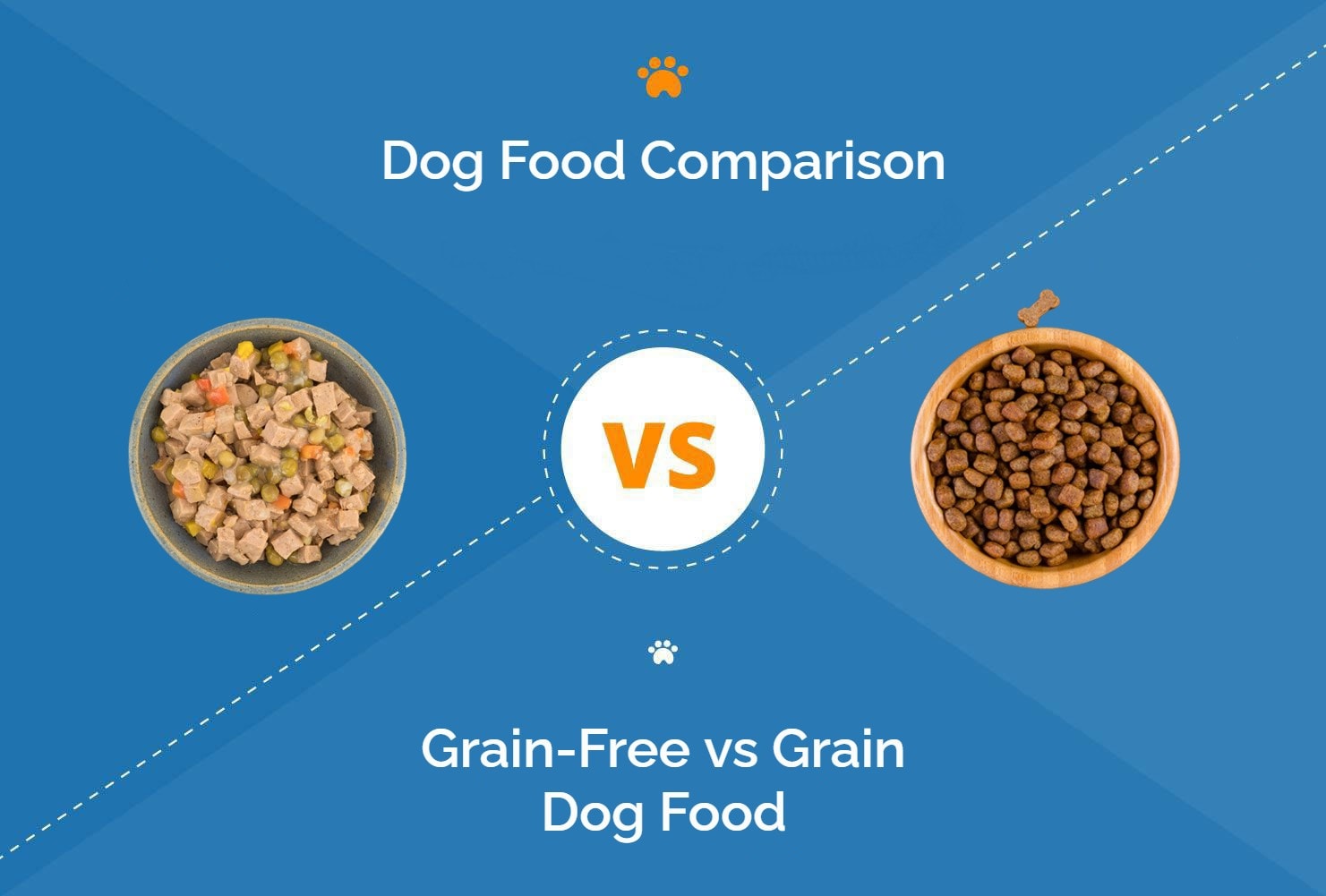
The information is current and up-to-date in accordance with the latest veterinarian research.
Learn moreAs gluten-free and low-carb diets became popular among human diet enthusiasts, grain-free pet foods also began to flood the market. If you find yourself bombarded with opinions on all sides regarding whether or not your dog is better off eating grain-free or grain-inclusive diets, it can be hard to know which one to choose.
Generally, dog owners look to grain-free diets if theyre concerned that their pup has food allergies, a sensitive stomach, or because they believe that dogs are carnivores that shouldnt eat grains and starches in the first place. Other owners may avoid grain-free foods because they are concerned about a potential link between these diets and heart disease. Also, wild canid diets in general contain about 24% protein and grain-free diets are often higher than this.
In this article, well compare grain-free and grain diets to help you decide which one to choose. Theres a kernel (grain?) of truth to most of what youve heard about grain-free diets, both good and bad. So it will likely come down to personal preference. However, most dogs dont need to avoid grains unless suggested by a veterinarian.
At a Glance
- May include a range of grains
- Typically uses common proteins like chicken, beef, and lamb
- May contain legumes but not usually in the first four ingredients by weight
- Most recipes available are grain-inclusive diets
- Almost all brands include at least one grain recipe
- Wide range of prices
- On average, cheaper than grain-free diets
- Typically uses a starch like potatoes in place of grain
- More likely to use unusual meats like venison, salmon, duck
- More likely to contain legumes which are potentially linked to heart disease
- Some may be available in grocery stores or big box stores
- More likely to be found in pet stores or online retailers only
- More widely available than in previous years, but not all brands carry a grain-free recipe
- The average price tends to be higher than grain diets
- Some variability between brands
- The more expensive dog foods tend to be grain-free
![]()
 Overview of Grain Diets
Overview of Grain Diets
Historically, most dog foods (dry formulas especially) have contained grain. Carbohydrates serve as an energy source and help the dry food stick together. Rice, corn, and wheat are three regularly used grain ingredients in dog food.
Wheat is one of the five more common food allergens for dogs, which would seem to make the argument for grain-free food until you find out the other four are protein sources! Less than 10% of dogs are thought to have a genuine food allergy and most of them will be to a protein source.
With concerns over food allergies and additional worries about some ingredients in grain-free diets, some companies have compromised by creating recipes with unusual ancient grains like quinoa and spelt. Most grain dog foods are made with common proteins like chicken, lamb, and beef, with the occasional salmon and rice option thrown in.
As the FDA continues to investigate the link between certain dog food ingredients and heart disease, they have discovered that both grain and grain-free diets can contain these items, called pulses. In general, grain-free foods remain more likely to have them because most recipes use them to boost protein content in place of grains.
If you want to feed grain-inclusive dog food, you wont have any trouble finding it. Nearly every dog food brand, especially the bigger, corporate manufacturers, has grain-inclusive diets, usually in multiple recipes for all life stages. You probably wont have to make a separate trip to the pet store either.
The cost of grain-inclusive diets varies widely depending on the other ingredients (especially the protein source) they contain. On average, however, youll likely pay less for grain-inclusive dog food.
- Wide variety of options
- Generally cheaper and more readily available
- Less likely to contain pulses
- Wheat is a potential allergen
- Quality can vary by brand
- Some may still contain pulses
Overview of Grain-Free Dog Food
Grain-free food is typically marketed as either a more biologically-appropriate diet for dogs or as an alternative for dogs with suspected food allergies. In place of traditional grains, these diets generally use other starches and proteins like potatoes and peas. Grain-free diets often take their recipes a step further and choose unusual or novel proteins like venison, bison, whitefish, or rabbit.
Sweet potatoes, peas, chickpeas, beans, and other legume products are some of the legumes more frequently associated with dilated cardiomyopathy heart disease in dogs. As we mentioned, the FDA first identified grain-free diets as the greatest concern for containing these ingredients. Further research has found that they may be present in grain foods as well, but they remain more common in grain-free. The link is far from confirmed and work is ongoing.
More brands than ever are producing grain-free diets, but most are still sold in pet stores, especially the premium or more expensive brands. You may not be able to find as many grain-free foods on your weekly grocery run, for example. Many of the most expensive dog foods are grain-free, although you can certainly find more reasonably priced options.
While many people choose grain-free foods to help avoid allergies, dogs are more likely to be allergic to proteins than grains. We mentioned that wheat is one of the top five allergens, but the other four are beef, dairy products, chicken, and lamball commonly found in grain-free diets.
- May be useful for some dogs with food sensitivities or gluten enteropathy
- Often made with novel proteins
- More likely to contain pulses
- More expensive on average
- Less widely available
What Are the Differences Between Them?
Ingredients:
| Edge: | Grain-inclusive Dog Food |
Unless your veterinarian recommends that your dog avoid grain, theres no reason to assume it will cause a problem.
Grain-inclusive dog food usually isnt an issue for the average dog, especially because proteins, not grains, spike most food allergies. Domestic dogs are adapted to process grains and starches, so they receive nutrition from those sources as well, not just from meat.
Grain-inclusive dog foods are also less likely to contain pulses or use them in lower quantities than grain-free diets.
Price
| Edge: | Grain-inclusive Dog Food |
Grain-inclusive dog food prices vary based on what other types of ingredients the recipe utilizes. Some can still get expensive, especially if you buy an ancient grain or real meat recipe. However, on average, you can find cheaper grain diets than grain-free.
Quality
Judging the quality of grain-inclusive versus grain-free diets is too subjective to declare a clear winner. Grain-free diets often tout themselves as higher quality because they use more protein, real ingredients, and fewer fillers. Filler is a term that means an ingredient that has no nutritional value. This is not true of corn and wheat as they do provide nutrients.
Calling something a premium or real ingredient is merely advertising, with no data proving whether it is of higher quality. All dog food sold in the United States must meet the same basic nutrition standards, no matter the price or how many artificial colors it contains.
What suits one dog may not suit another, but that doesnt necessarily speak to the actual quality of the food. With so many different options for both grain-free and grain-inclusive diets, its hard to make a blanket statement about which is higher quality.
What the Users Say
Weve looked at what other users say about grain versus grain-free dog foods. Our research includes reading reviews and discussions about various grain-inclusive and grain-free diets. Both grain and grain-free dog foods have their dedicated fans and those who swear theyll never feed either again.
Typical positive comments about grain-free food include users whose dogs show less itching or firmer stools on a grain-free diet. Some users found the high protein content of most grain-free foods too rich for their dogs. Others disliked the higher prices or reported their dogs didnt like the taste of some of the more unusual protein foods.
With so many grain-inclusive dog foods available, opinions are also quite varied. Most positive comments for specific brands centered on the taste, affordable price, and often that they had switched off grain-free food out of concern for the potential link to heart disease.
Some users still found grain-inclusive diets too expensive and others complained about the use of fillers or poor quality ingredients.
![]()
 Conclusion
Conclusion
Grain-free diets arent automatically healthier for all dogs and may be more likely to contain ingredients under investigation for links to heart disease. Because grain-free food costs more on average, theres no reason to spend more on it unless your vet recommends that your dog avoid grain.
If youre noticing symptoms like itchy skin or diarrhea, dont assume its because your dog is eating grain or has food allergies. See your vet to rule out other more common causes and switch to grain-free only if necessary.
See Also:
Featured Image Credit: Left: Dog Food (Image Credit: Louella938, Shutterstock) Right: Grain Dog Food (Image Credit: nadisja, Shutterstock)
Guide to Grain-Free Dog Food
Updated on January 4, 2020
Grain-free and gluten-free products have gained much popularity among people in recent years, and pet food manufacturers are following this trend, too. But is grain-free dog food the best choice for your dog?
What are the benefits of grain-free vs. grain dog food? Heres a guide to grain-free dog diets and how they compare to grain dog food.
What Is Grain-Free Dog Food?
Before we talk about grain-free dog food, you need to know which grains are commonly used in dog foods. These include:
Wheat
Corn
Rice
Oats
Barley
Rye
Soy
Are Grain-Free Dog Diets Free of Carbohydrates?
While grain-free dog foods do not have grains, they do substitute other carbohydrate sources, such as potatoes, sweet potatoes, lentils, peas, or quinoa. Therefore, grain-free foods are not carb-free. In some cases, a grain-free food may be equal to or higher in carbs than dog foods with grains.
Is Grain-Free Dog Food Also Gluten-Free?
Grain-free and gluten-free are not synonymous terms.
Gluten-free foods do not have gluten-containing grains such as wheat, barley, and rye, but they may still contain other grains. And grain-free diets may be gluten-free unless they contain ingredients that are hidden sources of gluten.
In addition, studies have shown that commercial dog foods often have cross-contamination during the manufacturing process, and therefore, may not be totally free of the ingredients they claim.
Grain-Free vs. Grain Dog Food
Whole grains provide an important nutritional resource for your dog, including B vitamins, iron, magnesium, selenium, carbohydrates for energy, and fiber to aid in digestion.
You may have heard that grain-free dog food has more meat because it makes up for the lack of grains. Grain-free diets are not all meat, although they may have a higher proportion of meat in them. As weve learned, they also substitute some of those grains with other carbohydrates.
You may also think that grain-free dog diets include only high-quality ingredients, but this isnt necessarily true any more so than with grain dog food.
In certain situations, your veterinarian may recommend a grain-free diet instead of grain dog food. For example, in dogs suspected of having food allergies (also known as an adverse food reaction), a grain-free diet might be recommended on a trial basis to see if symptoms improve.
It is important to recognize, however, that very few dogs have allergies to the grains in dog foods. The vast majority of food allergies are to the protein source (meat) in the food.
Does Grain-Free Dog Food Cause Heart Disease?
There have been recent concerns regarding the safety of grain-free foods and heart disease in dogs. The Food and Drug Administration (FDA) has opened an investigation into the development of dilated cardiomyopathy in dogs that are fed grain-free diets.
Dilated cardiomyopathy is a heart condition resulting in an enlarged heart and thinning of the heart muscle. This weakens the heart and can lead to heart failure and death.
The FDA opened this investigation due to the rising incidence of dilated cardiomyopathy. They have found that with the 1100+ dogs studied, 90% of the products fed were labeled as grain-free diets.
The most recent update came from a virtual scientific forum where scientific experts from academia, industry, and veterinary medicine collaborated and discussed their research on DCM. Dr. Steven Solomon, Director of the Center for Veterinary Medicine (CVM) for the FDA, emphasized that this was not an investigative update, and stated the following in his opening remarks:
I believe that our approach to date speaks to the fact that, based off the adverse event reports we have received, we have observed an association between certain diets and DCM. However, it has been nothing that would trigger a recall or market withdrawal, because the DCM issue seems to involve more factors than the food itself.
In the ongoing investigation, he stated that the FDA hopes to:
...explore additional avenues about ingredient levels, nutrient bioavailability, ingredient sourcing, and diet processing to determine if there are any common factors. We have asked pet food manufacturers to share diet formulation information, which could substantially benefit our understanding of the role of diet.
His advice to pet parents was that the best thing that you can do is to talk to your veterinarian about your dogs dietary needs based on their health and medical history.
Should You Switch Your Dog to or From a Grain-Free Diet?
Your veterinarian should be consulted regarding the best dietary choices for your dog.
There have not been any recommendations issued by the FDA advising whether you should or should not feed your dog a grain-free diet, as their study is ongoing.
The most important consideration in choosing a dog food is that it provides complete and balanced nutrition.
If you are thinking of switching your dog to a grain-free diet, discuss the risks and benefits of feeding a grain-free diet with your veterinarian first.
If your dog is already on a grain-free diet, and you want to know if you should switch to a dog food that has grains, ask your veterinarian what the best dog food option would be for your particular dog.
Featured Image: iStock.com/SolStock

